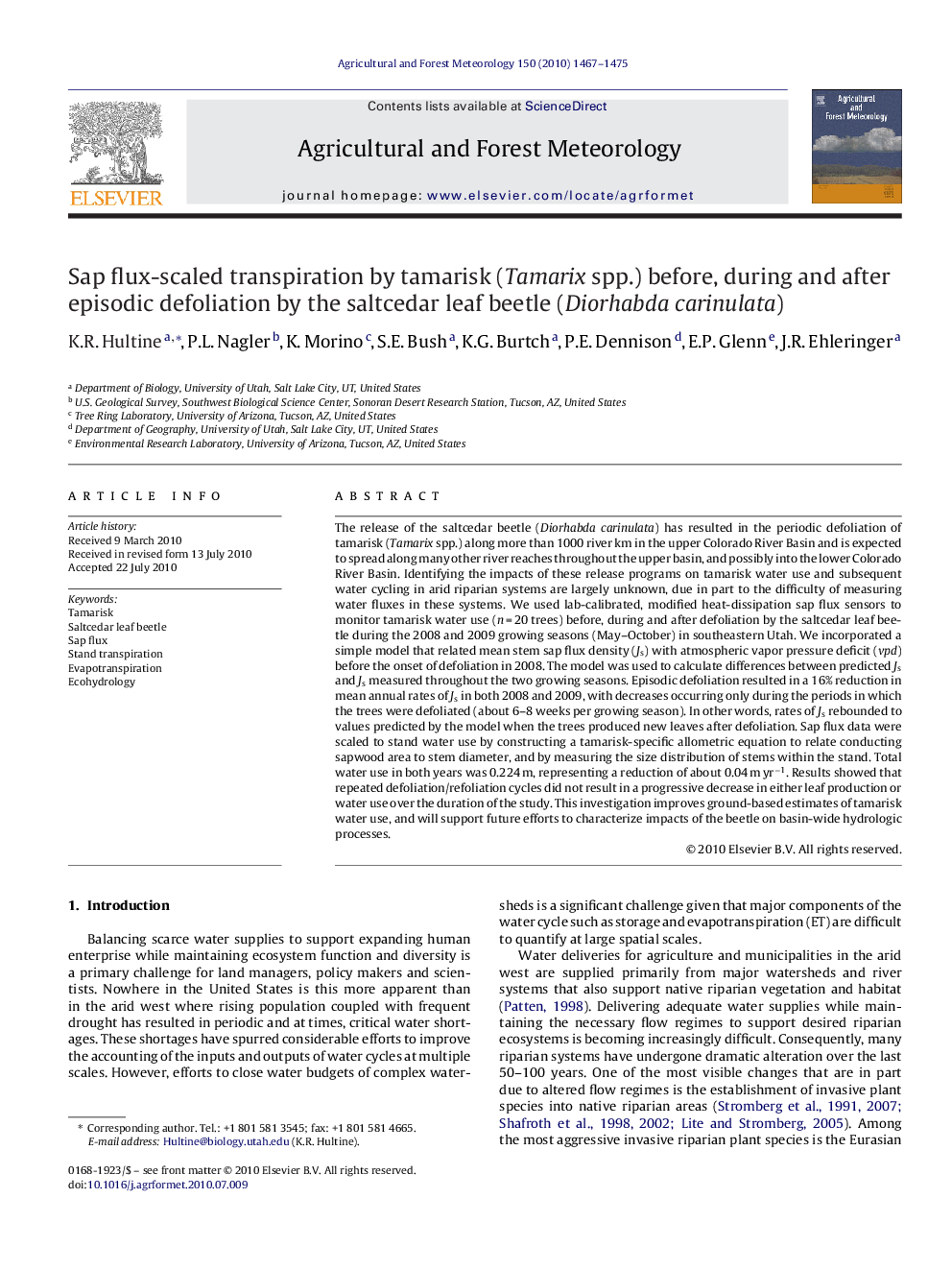| کد مقاله | کد نشریه | سال انتشار | مقاله انگلیسی | نسخه تمام متن |
|---|---|---|---|---|
| 82192 | 158380 | 2010 | 9 صفحه PDF | دانلود رایگان |

The release of the saltcedar beetle (Diorhabda carinulata) has resulted in the periodic defoliation of tamarisk (Tamarix spp.) along more than 1000 river km in the upper Colorado River Basin and is expected to spread along many other river reaches throughout the upper basin, and possibly into the lower Colorado River Basin. Identifying the impacts of these release programs on tamarisk water use and subsequent water cycling in arid riparian systems are largely unknown, due in part to the difficulty of measuring water fluxes in these systems. We used lab-calibrated, modified heat-dissipation sap flux sensors to monitor tamarisk water use (n = 20 trees) before, during and after defoliation by the saltcedar leaf beetle during the 2008 and 2009 growing seasons (May–October) in southeastern Utah. We incorporated a simple model that related mean stem sap flux density (Js) with atmospheric vapor pressure deficit (vpd) before the onset of defoliation in 2008. The model was used to calculate differences between predicted Js and Js measured throughout the two growing seasons. Episodic defoliation resulted in a 16% reduction in mean annual rates of Js in both 2008 and 2009, with decreases occurring only during the periods in which the trees were defoliated (about 6–8 weeks per growing season). In other words, rates of Js rebounded to values predicted by the model when the trees produced new leaves after defoliation. Sap flux data were scaled to stand water use by constructing a tamarisk-specific allometric equation to relate conducting sapwood area to stem diameter, and by measuring the size distribution of stems within the stand. Total water use in both years was 0.224 m, representing a reduction of about 0.04 m yr−1. Results showed that repeated defoliation/refoliation cycles did not result in a progressive decrease in either leaf production or water use over the duration of the study. This investigation improves ground-based estimates of tamarisk water use, and will support future efforts to characterize impacts of the beetle on basin-wide hydrologic processes.
Journal: Agricultural and Forest Meteorology - Volume 150, Issue 11, 15 October 2010, Pages 1467–1475